By: Jeff Kellick
The system architecture design of Perspective VMS® is flexible to suit the varying demands of each customer. At its core, PVMS is a web server application distributed to clients through a browser-based interface. The network connection from PVMS Services to the client workstation is via a LAN/WAN/GAN.
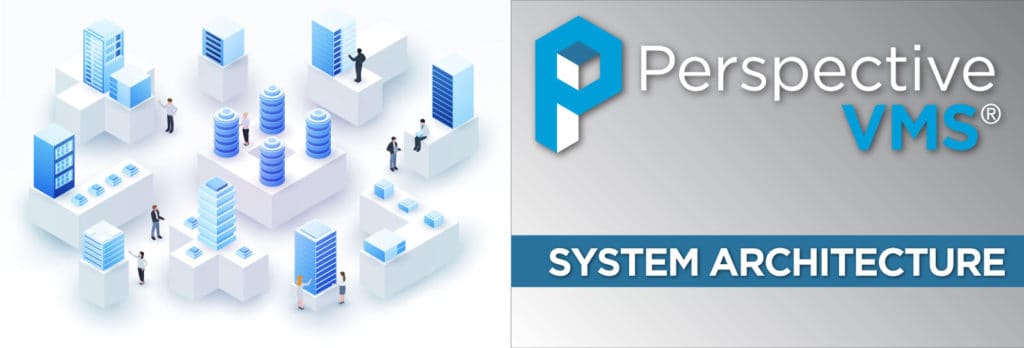
Network
Perspective VMS® is a network-connected Video Management Software application. To view the PVMS web-client you will need established connectivity with your security network. The security network may be a closed Local Area Network (LAN) or available over the internet on a Wide Area Network (WAN).
Perspective VMS® uses several default TCP connections for accessing services. By default, your network administrator will need to allow the following ports:
4530: For Live Streaming
8090: For Live Proxy Streaming
8091: For Archive Streaming and Extractions
943: If using Cross-Domain Access
443: If using SSL Connections
Servers/Services
PVMS leverages windows-based services for the distribution of jobs performed for managing video. These are typically distributed among system servers. PVMS Services are outlined in detail as follows:
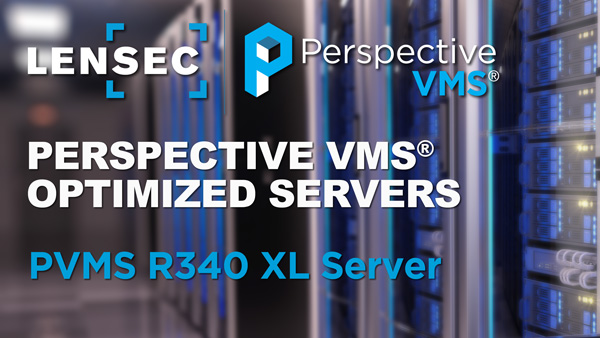
PVMS System Services
Database Server – PVMS Leverages a Microsoft SQL Server Platform (Express/Standard/Enterprise) for transactional data warehousing.
Web Application – The PVMS user interface is presented as a Web Application by Internet Information Services (IIS) from Microsoft.
Administrative Service – The Administrative Service monitors and checks hard drives for the right utilization; checks how much free space on the drive(s); and subsequently purges old archives or moves them to a different offsite location. This service is also responsible for importing and ensuring user synchronization between Active Directory and PVMS.
Health Monitor Service – The Health Monitor Service checks if system cameras defined in PVMS are up and running. If not, the service will notify the user about the offline status of the camera in question. The service also generates health reports related to cameras, servers, and other system components.
Streaming Service – The Streaming Service acts as an intermediary agent between PVMS and system cameras. The service is responsible for handling the video streams and passing them to the system. It is also responsible for streaming archive video that is created using Archiving Service.
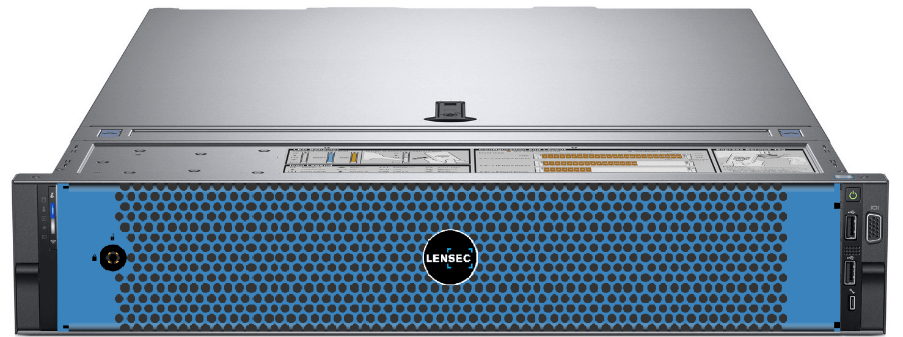
Archiving Service – The Archive Service provides for archiving image and video streams from system cameras, handling image extraction requests from users and creating archives and extractions accordingly. This service also manages live recording requests from users to capture camera video streams and encodes them using an H.264/MPEG-4 codec for optimal quality and size.
External System Service – The Integration Communication Service communicates using independent packages from PVMS. The service acts as an intermediary communication agent between PVMS and 3rd party software/hardware applications (RFID, Video Analytics, Access Control, etc.)
Analytics Service – The Analytics Service generates server-based video analytic events and integrations with 3rd party analytics providers.
Standalone Site Architecture
In a standalone site, all your services can reside on one computer. This is typically a smaller site with a simple deployment.
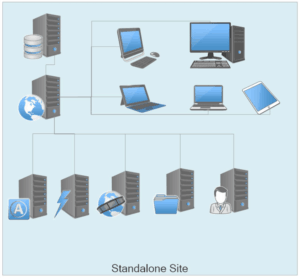
Enterprise Site Architecture
An Enterprise site advances to more complex system architecture. The site might have multiple locations that are connected across the WAN. The subsites don’t need to run all the services. They can run only the streaming and archive services locally and then connect across the WAN to the other services.
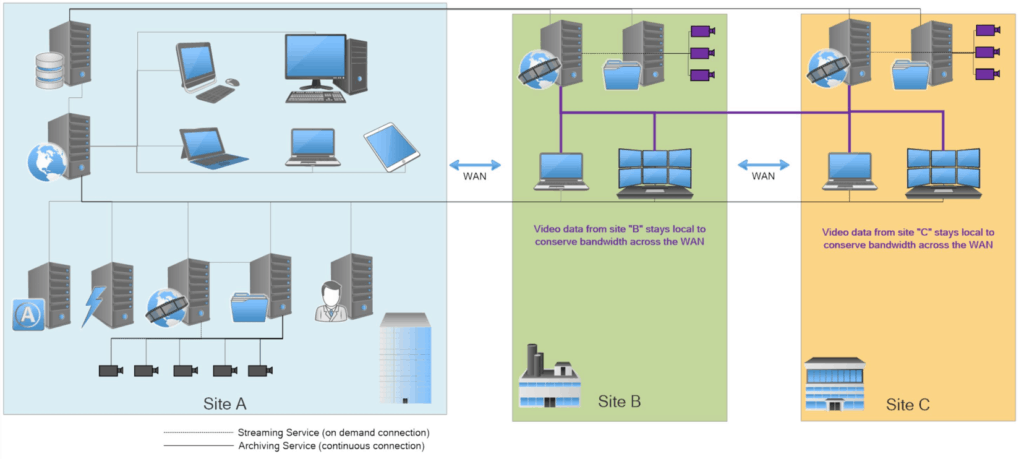
Enterprise System Architecture with ADAM
ADAM stands for Autonomous Distributed Archive Management. ADAM introduces a secondary distributed archiving service along with a distributes SQL Express database to handle transactions archiving if the WAN connection to the primary database is lost. It doesn’t replace the main databases. But, it supplements the database in case the connection goes down. When the connection becomes stable, it automatically transfers the archives and transactions back to the main system.
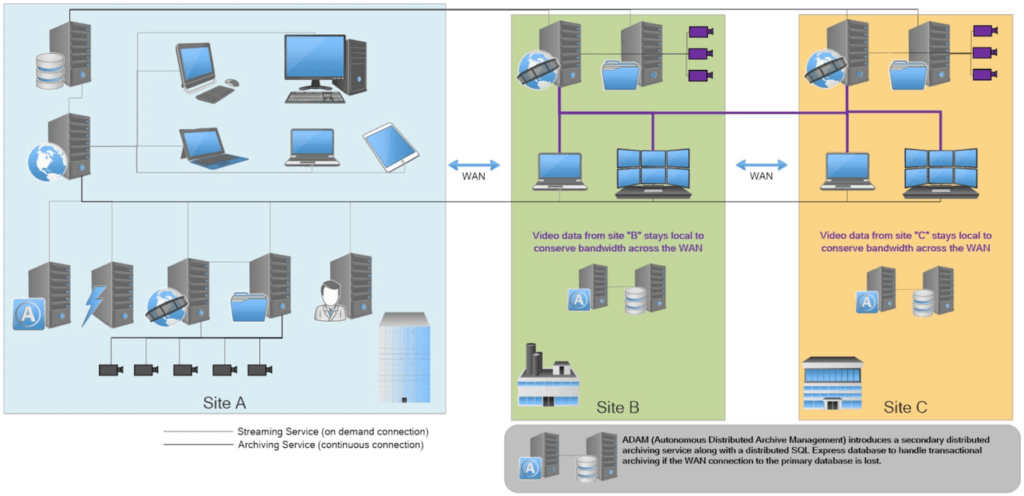
Enterprise System Architecture with Interlink
In Perspective VMS® Version 4.0.0, LENSEC has added Interlink, an interconnected framework for advanced enterprise systems. PVMS Interlink is designed for a distributed multi-site. This is an advanced framework of interconnected systems. These allow for individual sites to operate fully autonomously, including web services. The primary differentiator this functionality introduces is individual web hosts at each site. This can maintain local connectivity when the network connection is lost over the Global Area Network (GAN/WAN) and full functionality of the application must remain. The systems unite under an interconnected framework when overall connectivity is established.
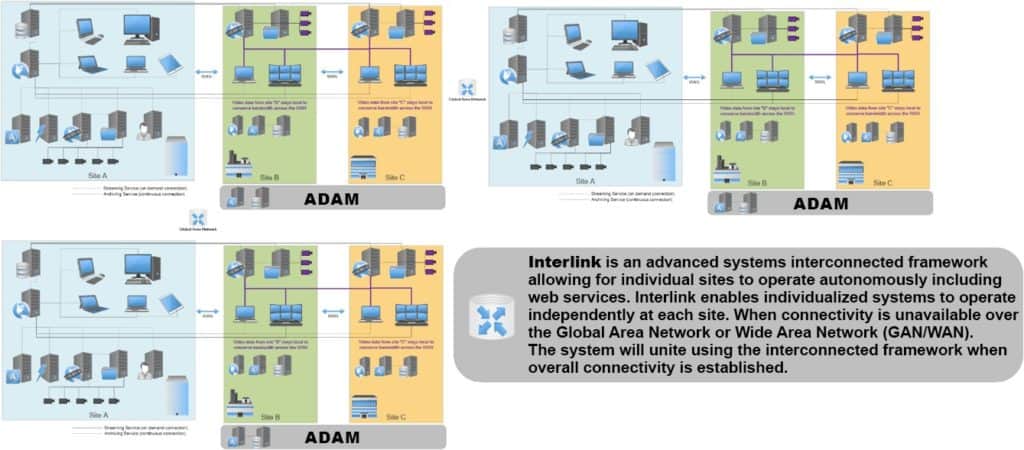
Of course, site architecture varies greatly depending on each site and the variables involved. Our partner services team is available to help partners make wise decisions regarding system architecture. If you need assistance with planning architecture for a deployment, feel free to talk with our partner services team to learn more.

